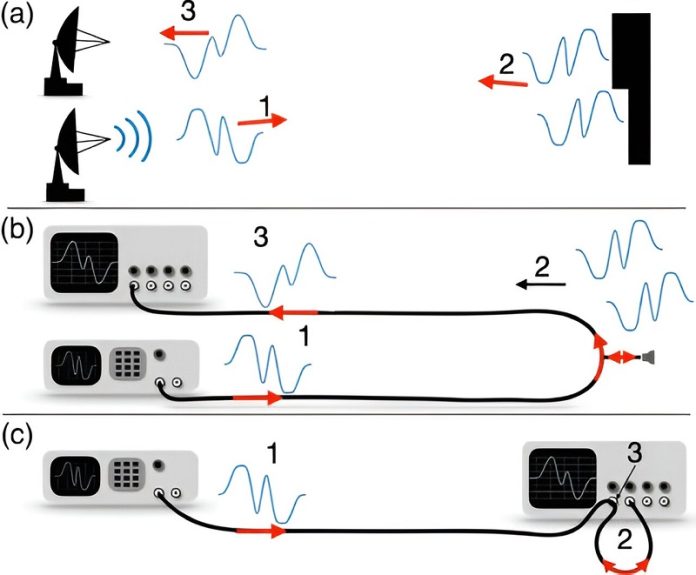
Have you ever wished you could see through walls or deep underground?
Scientists have been working on this with a technology called radar, which sends out waves that bounce back after hitting something, giving us information about what’s out there.
But for almost a century, there was a problem: the further we wanted to see with radar, the blurrier the image became.
It was like choosing between binoculars that let you see really far but everything looked tiny, or a magnifying glass that showed big details but only up close.
Now, imagine a magic lens that lets you see both far and in great detail. That’s exactly what scientists from Chapman University and some other places have created!
The old way of using radar was like trying to figure out what’s in a room by listening to echoes.
If two objects were close together, like a cup and a plate on a table, the radar might just hear a single ‘thud’ and think it’s one big object. This meant there was a limit on how clear the radar picture could be, especially over long distances.
John Howell, the main scientist behind the discovery, said they’ve found a way to solve this old problem.
Their new technique makes the radar “hearing” so sharp, it can tell the difference between a coin and a piece of broken pottery deep underground!
That’s huge for fields like archaeology where you want to know what’s buried without having to dig it up.
How did they do it? Instead of just sending out one kind of wave, they sent out special combinations of waves. It’s like listening to music: if two notes are played at once, they combine to create a new sound.
The scientists used this idea, mixing different radar waves in a specific way. When these mixed waves hit objects and bounce back, they form a unique pattern.
This pattern tells the scientists not only what’s out there but exactly how far away each object is, even if they’re very close together.
Andrew Jordan, another expert on the team, mentioned something interesting. In the world of radar, overlapping waves (or interference) were considered bad, like static on a radio. But this new discovery turns that idea upside down.
They’re using this interference on purpose to see clearer and further than before!
One of the coolest parts? This could change many industries and help in different ways. For example, it could safely find hidden landmines or even give doctors a new way to look inside our bodies without surgery.
Howell said they’re now trying to see if their radar can measure distances between lots of objects at once or give detailed views of surfaces, like seeing every bump and groove on a sculpture from far away.
In simple terms, this is like inventing a superhero’s vision power for our machines.
It’s an exciting time in the world of science and technology, and this new radar might just be the beginning of many more discoveries to come!
Follow us on Twitter for more articles about this topic.
Source: Chapman University.



